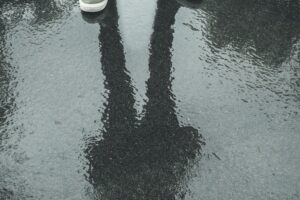Table of Contents
The Environmental Impact of Puzzle Books
While a fun pastime, the production and disposal of printed puzzle books contribute to significant environmental issues. The process starts with the use of paper, which can lead to deforestation. The inks, glues, and chemical dyes used in printing further add to the problem, potentially causing chemical runoff and water pollution.
Beyond production, the disposal of these books poses another challenge. Due to their mixed materials—paper, ink, and glue—they are often difficult to recycle efficiently and can end up in landfills. This results in a cycle of waste, from the felling of trees to the long-term decomposition of unrecyclable materials.
This is why many are now turning to digital alternatives. Digital puzzle books and games eliminate the need for physical materials, reducing their carbon footprint to zero. They offer a sustainable way to enjoy puzzles without contributing to deforestation or landfill waste.
Take a long look at the image above.
Each tightly compressed bale is made of discarded paper — shredded magazines, torn books, crushed cartons. Some of it may have once brought someone joy: a puzzle solved at a coffee table, a book flipped through on vacation. But now, it’s waste.
Every year, millions of puzzle books follow the same path: printed, purchased, played — then thrown away. And while we don’t always see the piles building up, their impact lingers.
Today, we ask: What if there’s a better way?
Puzzle Books and the Problem of Paper Waste
Printed puzzle books, like many physical products, come with environmental costs that add up fast:
- Each book uses virgin or semi-processed paper, contributing to deforestation
- Color inks often contain chemicals that aren’t biodegradable
- Binding glue, plastic coatings, and covers can’t be recycled efficiently
- Returned, unsold, or damaged books are often pulped or sent to landfill
Even those that do reach recycling centers can end up as low-grade waste, as seen in the image — jumbled together with food cartons and junk mail, destined to be processed in energy-intensive facilities or incinerated.
Digital Flipbooks: A Cleaner, Smarter Choice
Digital puzzle books sidestep all of this.
When you choose a digital flipbook, you eliminate:
- The need for paper, ink, and glue
- The shipping and packaging that accompany each book
- The future of that book as waste — damaged, outdated, or discarded
Instead, you get:
- Immediate access to puzzles online
- Zero waste — no landfill, no recycling complications
- A beautifully restored puzzle book that never fades, tears, or breaks
It’s not just about convenience. It’s about choosing a format that aligns with how we want the future to look.
The Waste You Don’t See
Behind every printed puzzle book are invisible costs:
- Energy consumption from manufacturing and freight
- Carbon emissions from overseas shipping
- Water waste and chemical runoff from the pulp and paper industry
- Warehousing space for books that may never be sold
This is what makes the waste cycle so damaging — it’s not just the trash itself, but the trail it leaves behind.
From Disposable to Sustainable
By switching to digital flipbooks, puzzle lovers can enjoy:
- The same rich artwork and gameplay — without the clutter
- A format that can be updated instead of replaced
- A long-term investment that’s light on the planet and on your shelf
At Classic Art Puzzles, we restore timeless art into high-resolution spot-the-difference puzzles, delivered digitally — no paper, no plastic, and no piles of discarded books.
Think Before You Print
We don’t have to give up the joy of puzzles to make an impact.
We just have to choose smarter.
So the next time you pick up a puzzle book, consider this:
Will it end up as a memory — or as a bale in the background of a recycling yard?



